



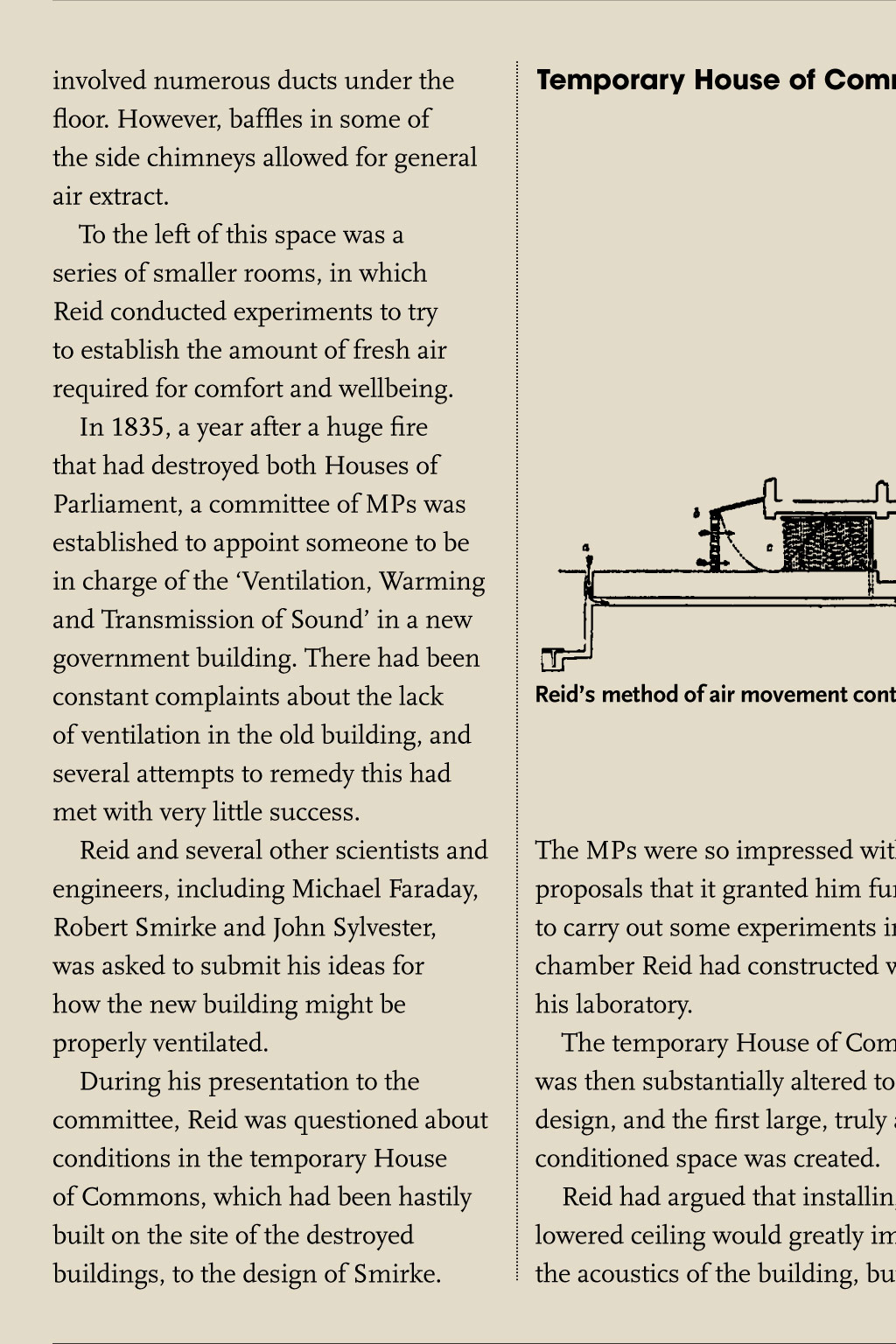
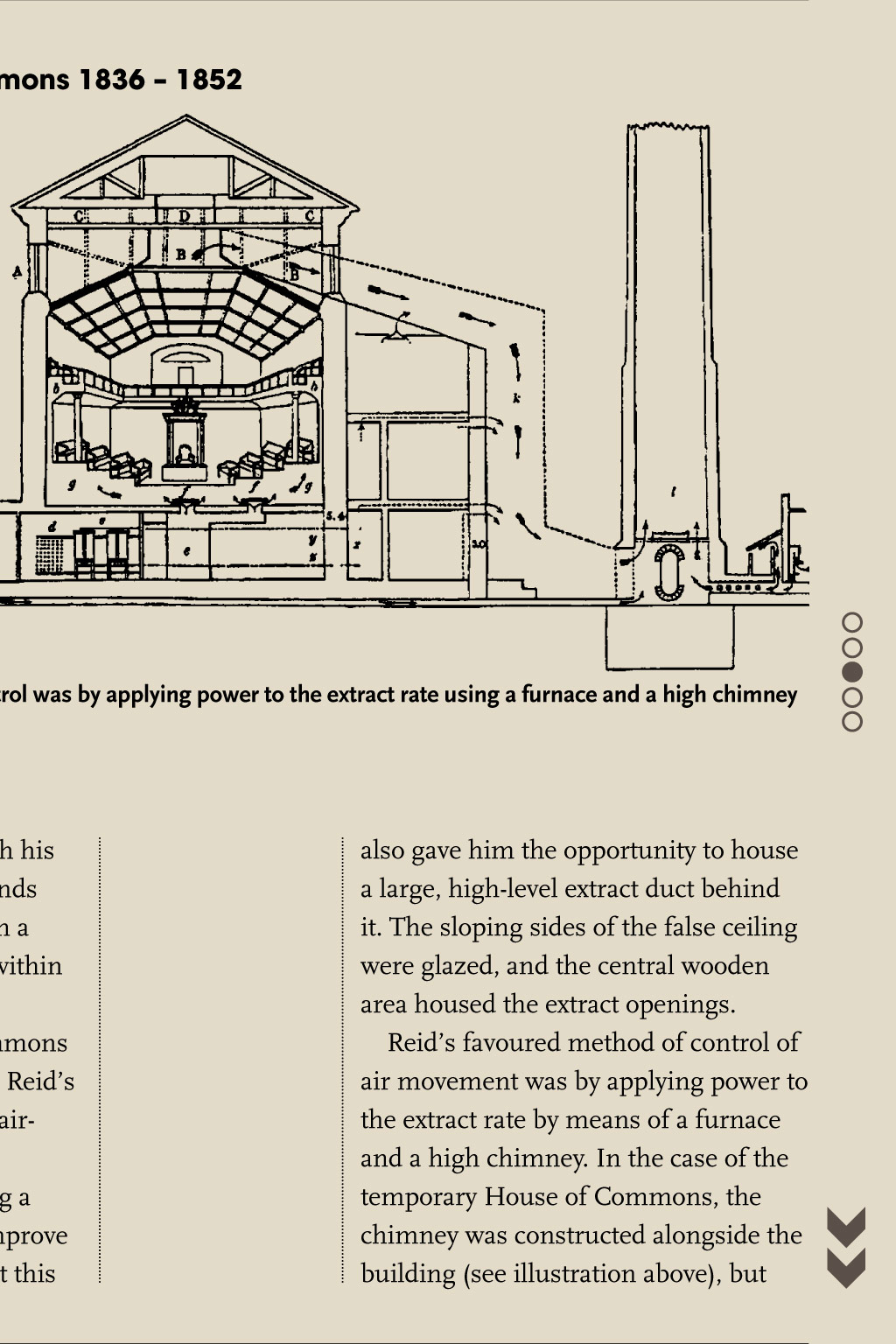
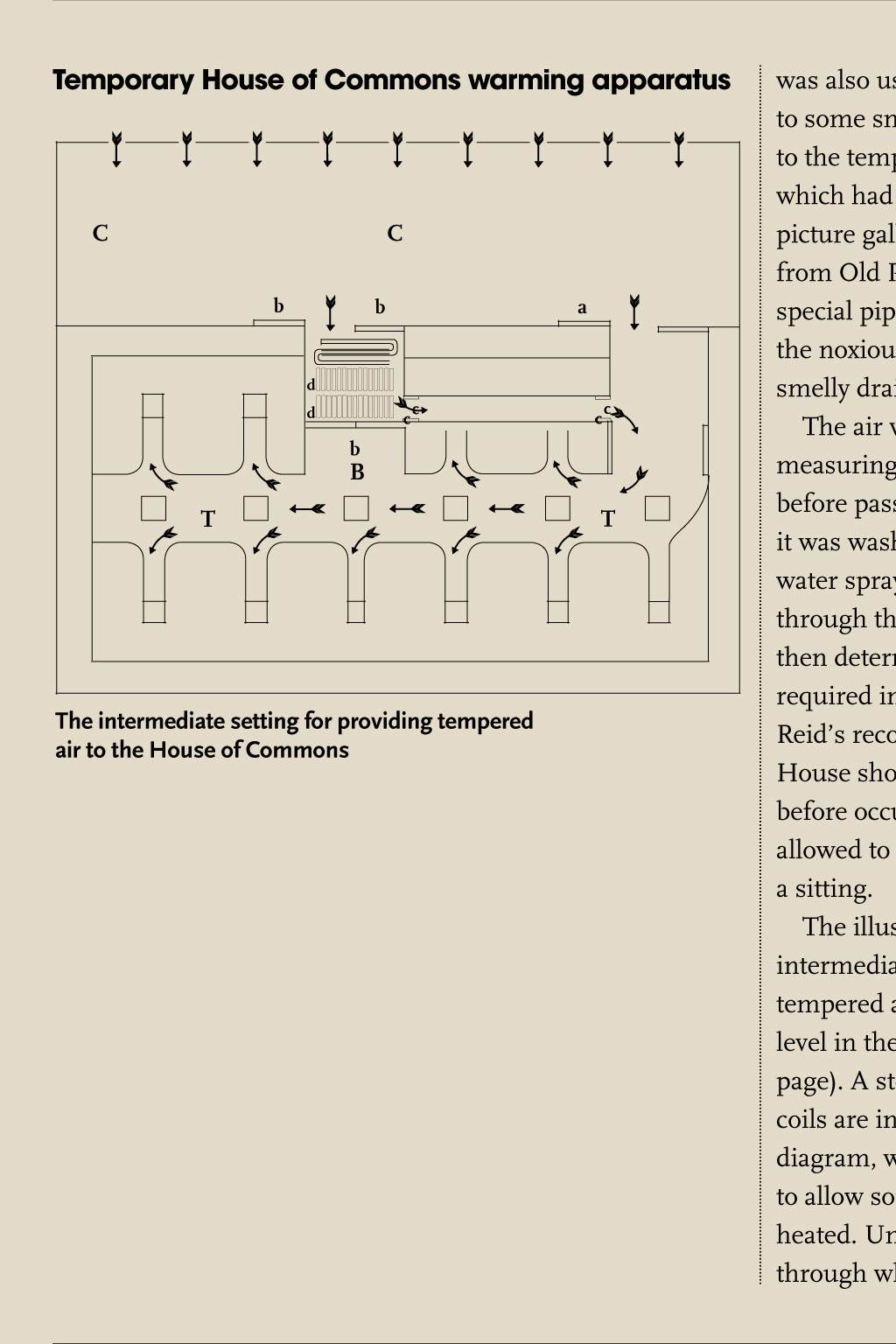
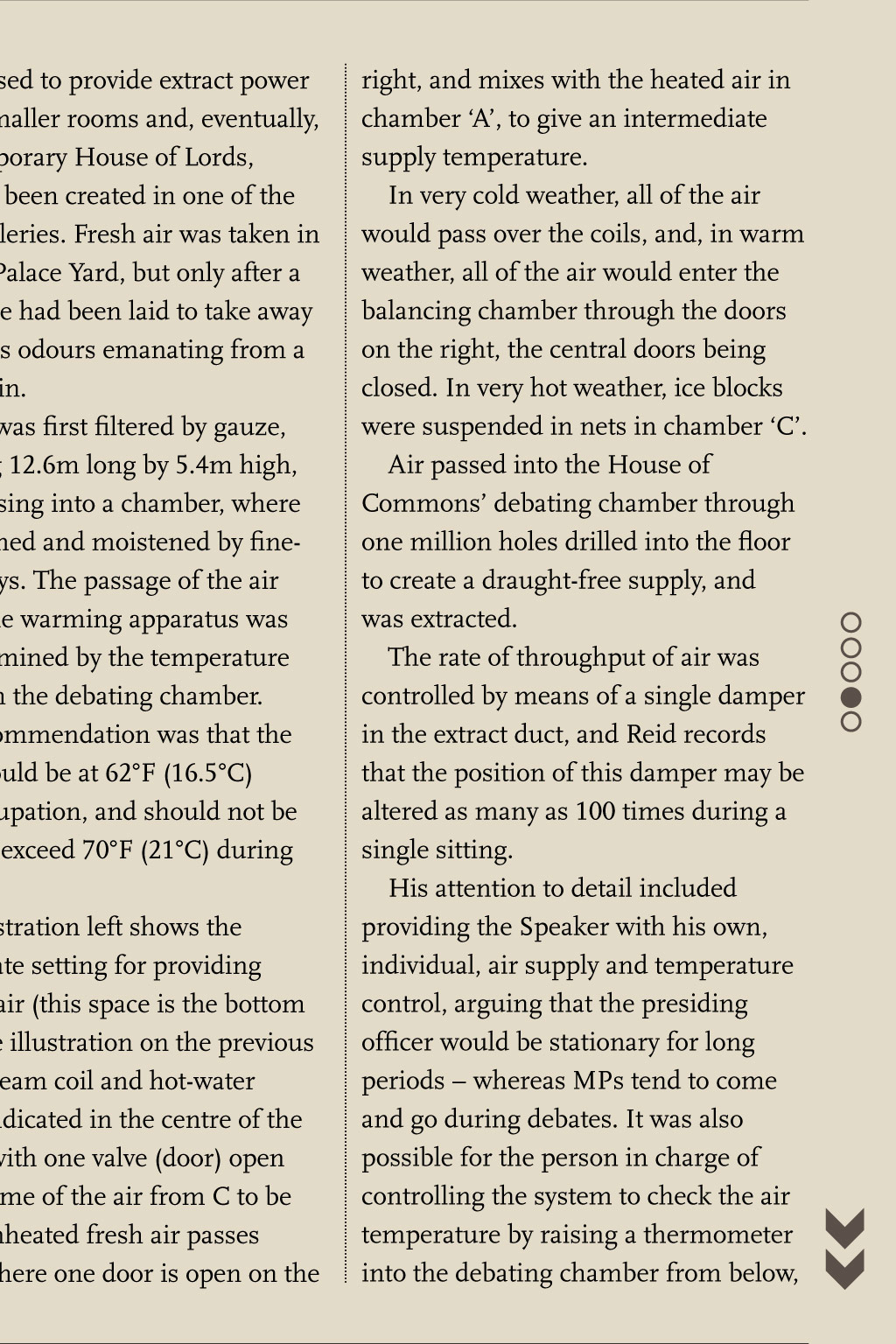
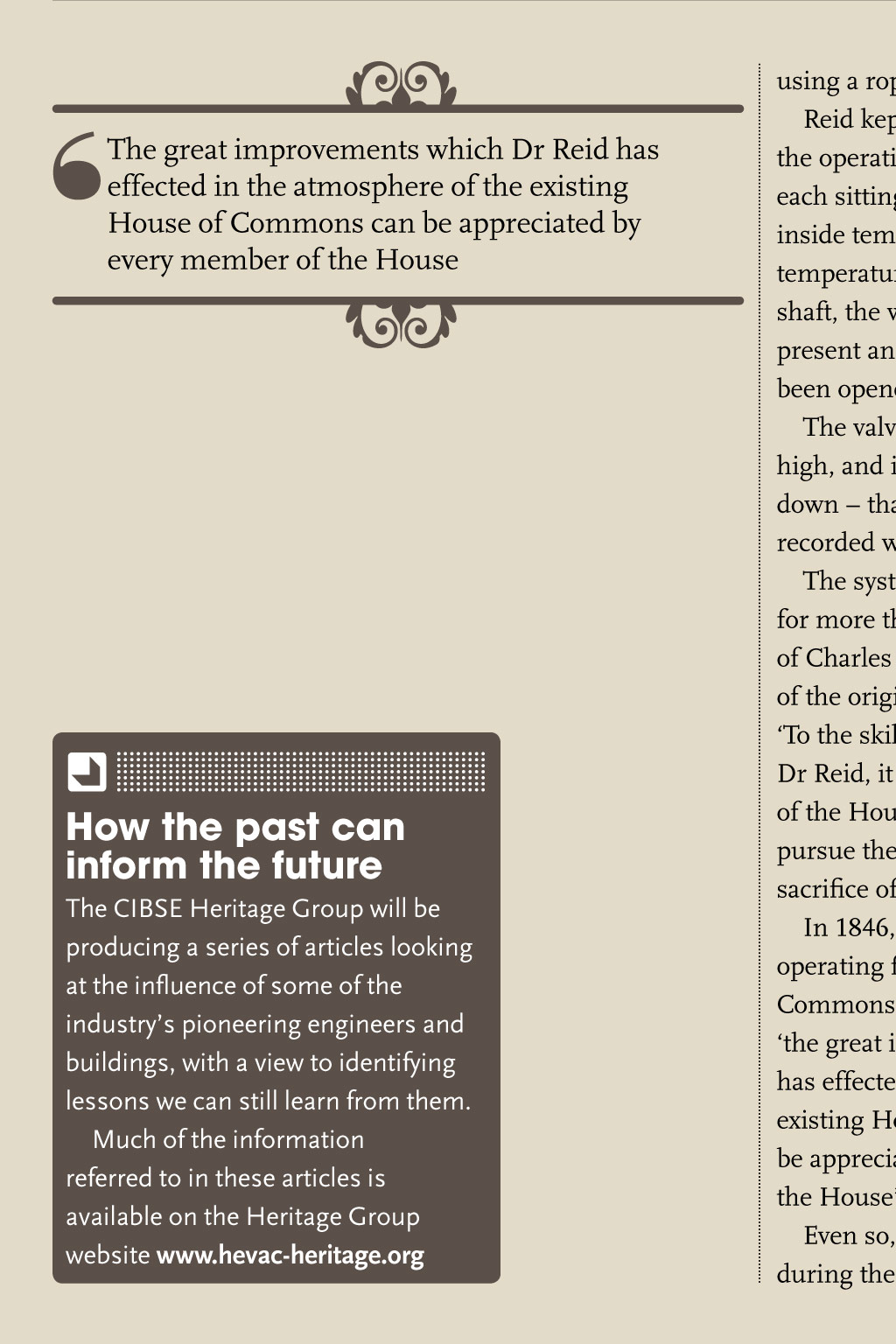
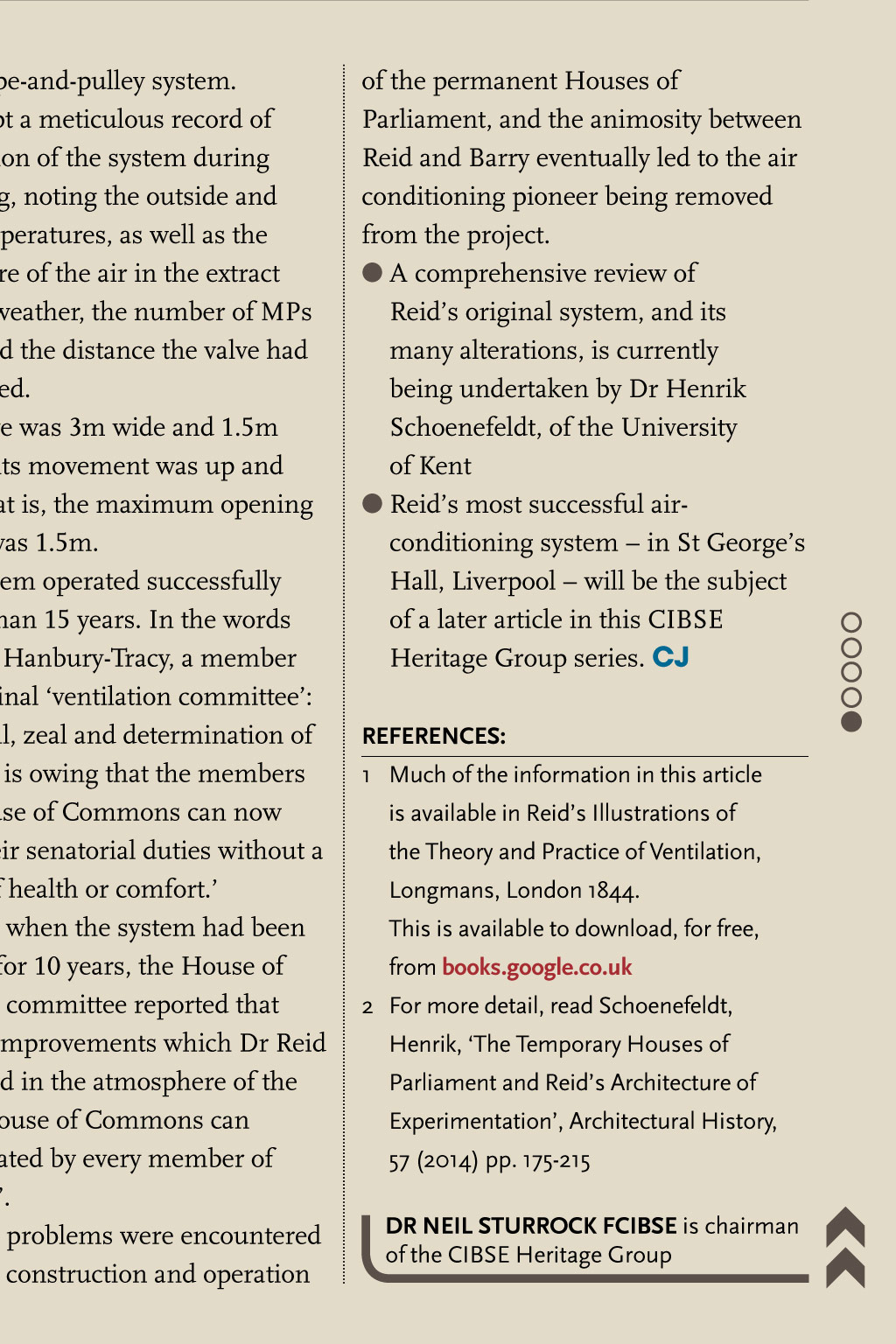











PROFILE DAVID BOSWELL REID David Boswell Reid the grandfather of air conditioning THE PIONEER WHO RID Parliament OF HOT AIR In the first of a series of articles looking at the influence of pioneering engineers and buildings, Dr Neil Sturrock, chairman of the CIBSE Heritage Group, profiles David Boswell Reid probably the first true building services engineer D r David Boswell Reid is considered to be the grandfather of air conditioning engineering, and was also a pioneer in acoustics and lighting design. He is perhaps most famous for his involvement with the design of the UK Houses of Parliament, in Westminster, a project for which his official title was Ventilator. He is very often unfairly blamed for the failure of the system to provide satisfactory environmental conditions for the building, which he always argued was down to the lack of cooperation afforded him by the architect, Charles Barry. Reid argued that Barry frequently acted without authority in making alterations that affected the large-scale air movement required for his system to work. Barry, on the other hand, was determined that Reids grand ideas should not be allowed to control the architecture. What is rarely reported is that Reid having been dismissed by the government was exonerated by an enquiry in February 1852, and awarded more than 3,000 in compensation. He was then allowed to make more than 30 alterations to the building involved numerous ducts under the floor. However, baffles in some of the side chimneys allowed for general air extract. To the left of this space was a series of smaller rooms, in which Reid conducted experiments to try to establish the amount of fresh air required for comfort and wellbeing. In 1835, a year after a huge fire that had destroyed both Houses of Parliament, a committee of MPs was established to appoint someone to be in charge of the Ventilation, Warming and Transmission of Sound in a new government building. There had been constant complaints about the lack of ventilation in the old building, and several attempts to remedy this had met with very little success. Reid and several other scientists and engineers, including Michael Faraday, Robert Smirke and John Sylvester, was asked to submit his ideas for how the new building might be properly ventilated. During his presentation to the committee, Reid was questioned about conditions in the temporary House of Commons, which had been hastily built on the site of the destroyed buildings, to the design of Smirke. to try to improve matters, but it was never wholly satisfactory, despite the varied attempts of other engineers over subsequent years. Reids fascination with ventilation had begun after a fairly circuitous journey through the world of academia at Edinburgh University. He initially went there to study medicine, following in the footsteps of his father, Dr Peter Reid who lectured in the Department of Medicine and his older brother. However, his main interest was in chemistry. Reid was disappointed to discover Edinburgh offered no classes in practical chemistry, so, in around 1826, he started his own, in some outbuildings at Edinburgh High School. His reputation quickly grew and, in 1828, he was asked by Professor Thomas Hope to help teach chemistry at the university. Reid had, by then, abandoned his medical studies, and had no formal qualifications for teaching undergraduates including medical students. However, he was granted special dispensation by the university to continue his studies part-time, and in 1830 gained his Medical Diploma. The following year he was made a Fellow of Temporary House of Commons 1836 1852 Reids method of air movement control was by applying power to the extract rate using a furnace and a high chimney The MPs were so impressed with his proposals that it granted him funds to carry out some experiments in a chamber Reid had constructed within his laboratory. The temporary House of Commons was then substantially altered to Reids design, and the first large, truly airconditioned space was created. Reid had argued that installing a lowered ceiling would greatly improve the acoustics of the building, but this Temporary House of Commons warming apparatus C C b b a d d b B T T The intermediate setting for providing tempered air to the House of Commons The great improvements which Dr Reid has effected in the atmosphere of the existing House of Commons can be appreciated by every member of the House How the past can inform the future The CIBSE Heritage Group will be producing a series of articles looking at the influence of some of the industrys pioneering engineers and buildings, with a view to identifying lessons we can still learn from them. Much of the information referred to in these articles is available on the Heritage Group website www.hevac-heritage.org the Royal College of Physicians. In 1833, Reid applied to Edinburgh University Council to create a chair in practical chemistry, but his proposal was rejected, so he left the university to set up his own practical chemistry demonstration laboratory. His familys wealth allowed him to do this, although by now Reid also had a large following of paying students. The laboratory was a major turning point for the Scot; for the first time, he was able to give proper consideration to the extraction of fumes from his experiments and, thus, began his lifelong association with ventilation. The laboratorys teaching space was about 24m2 in area and featured tiered seating for up to 300 students, a large demonstration table in the centre of the room, and numerous other benches for select experiments and student use. Ventilation and fume extract was achieved using more than 14 chimneys; however, much of the extract power came from one central chimney, which was much higher than all of the others. Reid described the teaching space as having about 100 furnaces, which can all operate at the same moment. Fume extract was usually downwards, and also gave him the opportunity to house a large, high-level extract duct behind it. The sloping sides of the false ceiling were glazed, and the central wooden area housed the extract openings. Reids favoured method of control of air movement was by applying power to the extract rate by means of a furnace and a high chimney. In the case of the temporary House of Commons, the chimney was constructed alongside the building (see illustration above), but was also used to provide extract power to some smaller rooms and, eventually, to the temporary House of Lords, which had been created in one of the picture galleries. Fresh air was taken in from Old Palace Yard, but only after a special pipe had been laid to take away the noxious odours emanating from a smelly drain. The air was first filtered by gauze, measuring 12.6m long by 5.4m high, before passing into a chamber, where it was washed and moistened by finewater sprays. The passage of the air through the warming apparatus was then determined by the temperature required in the debating chamber. Reids recommendation was that the House should be at 62F (16.5C) before occupation, and should not be allowed to exceed 70F (21C) during a sitting. The illustration left shows the intermediate setting for providing tempered air (this space is the bottom level in the illustration on the previous page). A steam coil and hot-water coils are indicated in the centre of the diagram, with one valve (door) open to allow some of the air from C to be heated. Unheated fresh air passes through where one door is open on the right, and mixes with the heated air in chamber A, to give an intermediate supply temperature. In very cold weather, all of the air would pass over the coils, and, in warm weather, all of the air would enter the balancing chamber through the doors on the right, the central doors being closed. In very hot weather, ice blocks were suspended in nets in chamber C. Air passed into the House of Commons debating chamber through one million holes drilled into the floor to create a draught-free supply, and was extracted. The rate of throughput of air was controlled by means of a single damper in the extract duct, and Reid records that the position of this damper may be altered as many as 100 times during a single sitting. His attention to detail included providing the Speaker with his own, individual, air supply and temperature control, arguing that the presiding officer would be stationary for long periods whereas MPs tend to come and go during debates. It was also possible for the person in charge of controlling the system to check the air temperature by raising a thermometer into the debating chamber from below, using a rope-and-pulley system. Reid kept a meticulous record of the operation of the system during each sitting, noting the outside and inside temperatures, as well as the temperature of the air in the extract shaft, the weather, the number of MPs present and the distance the valve had been opened. The valve was 3m wide and 1.5m high, and its movement was up and down that is, the maximum opening recorded was 1.5m. The system operated successfully for more than 15 years. In the words of Charles Hanbury-Tracy, a member of the original ventilation committee: To the skill, zeal and determination of Dr Reid, it is owing that the members of the House of Commons can now pursue their senatorial duties without a sacrifice of health or comfort. In 1846, when the system had been operating for 10 years, the House of Commons committee reported that the great improvements which Dr Reid has effected in the atmosphere of the existing House of Commons can be appreciated by every member of the House. Even so, problems were encountered during the construction and operation of the permanent Houses of Parliament, and the animosity between Reid and Barry eventually led to the air conditioning pioneer being removed from the project. l A comprehensive review of Reids original system, and its many alterations, is currently being undertaken by Dr Henrik Schoenefeldt, of the University of Kent l Reids most successful airconditioning system in St Georges Hall, Liverpool will be the subject of a later article in this CIBSE Heritage Group series. CJ REFERENCES: 1 Much of the information in this article is available in Reids Illustrations of the Theory and Practice of Ventilation, Longmans, London 1844. This is available to download, for free, from books.google.co.uk 2 For more detail, read Schoenefeldt, Henrik, The Temporary Houses of Parliament and Reids Architecture of Experimentation, Architectural History, 57 (2014) pp. 175-215 DR NEIL STURROCK FCIBSE is chairman of the CIBSE Heritage Group "